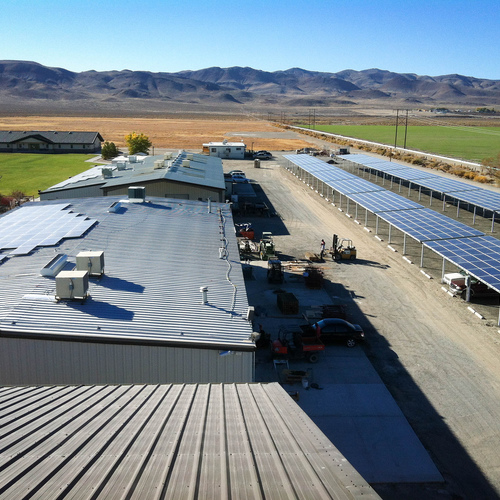
Image Credit: National Renewable Energy Laboratory
Retail net-metering for residential solar systems is under siege in some states, on the chopping block in Nevada and eliminated altogether in Hawaii. But California utility regulators have voted to keep it, a victory for both installers and retail customers.
PV Magazine reports the 3-2 vote last week was a rejection of efforts by state utilities to lower compensation rates for electricity generated by residential systems.
Regulators were voting on a net-metering plan that takes effect in July 2017 or as soon as the service areas of the three largest investor-owned utilities reach net-metering caps. Customers who own PV systems will get retail credits for the power they send to the grid, less “non-bypassable” charges (used to pay for low-income and efficiency programs) amounting to about 2 cents per kilowatt hour, PV Magazine said. Virtual net-metering systems, which are remote PV arrays not located at the site where power is actually used, would be subject to the same charge.
The decision also means that residential customers will be required to start using time-of-use rates in 2018 (except for customers in San Diego), and that new net-metering customers will have to pay a $150 application fee.
“It’s hard not to feel good right now in California,” Bernadette Del Chiaro, the executive director of the California Solar Energy Industries Association (CalSEIA), told the magazine. “It was a 3-2 vote and a real nail-biter, but at the end of the day California just protected net metering and that’s huge.”
Bryan Miller, senior vice presdient of public policy and markets at Sunrun and president of the Alliance for Solar Choice, said the decision is a compromise but would still allow California to maintain its “renewable energy leadership.”
The policy will be up for review in 2019.
Utilities worried about ‘cost burden’
The state’s Public Utilities Commission had voted earlier in favor of a proposed decision to preserve retail net metering, touching off complaints from major utilities, UtilityDive reported
San Diego Gas & Electric (SDG&E) said the net-metering proposal didn’t take into account a “growing cost burden” on ratepayers amounting to $100 per month for a family or some $160 million per year.
SDG&E, along with Pacific Gas and Electric and Southern California Edison, had proposed an alternative in which small commercial and residential net metering customers would be earn an “export rate” of 15 cents per kWh until distributed generation exceeded 7% of a utility’s total peak demand. After that, the rate would drop to 13 cents per kWh. Utilities also wanted to eliminate virtual net metering, UtilityDive said.
The Los Angeles Times said the three investor-owned utilities complained that maintaining retail net-metering rates would be a financial burden.
Weekly Newsletter
Get building science and energy efficiency advice, plus special offers, in your inbox.















0 Comments
Log in or create an account to post a comment.
Sign up Log in